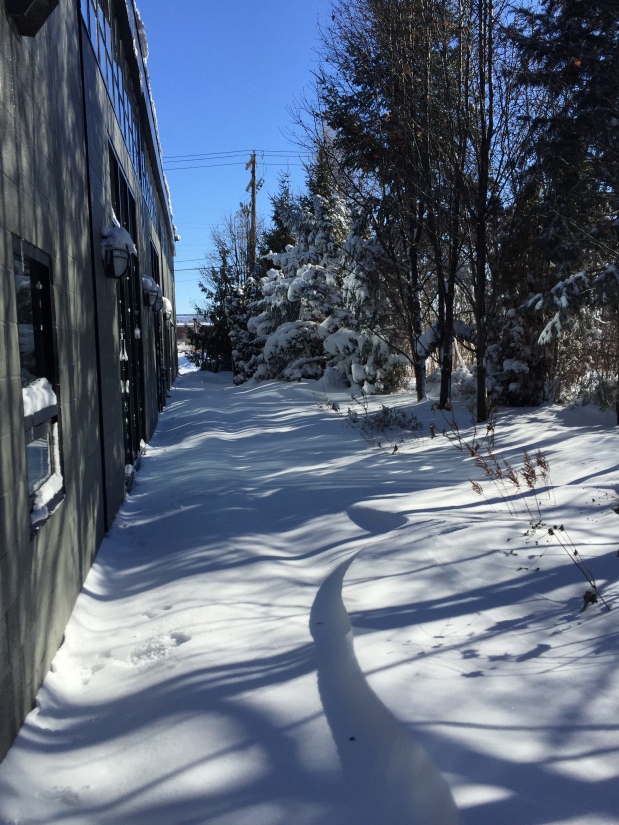Snow day! Well not for us at TDR but for all of the lucky kids in the area. Check out the snow outside of our back door! Hopefully all of you in southeast Michigan are digging out safely and get to enjoy the beautiful, snowy, sunshine today.
Getting to more interesting I know that most of you have been waiting for the sequel to Teeth Gone Wild – The Impacted Tooth Story, Part I. I am thrilled to announce that the wait is over! As you may recall, Part I included some mean old “wisdom” teeth who decided to go off the beaten path and do damage. Part II will star the ever popular CANINES! I know, you probably predicted this, but we had to keep it a secret for as long as possible. Canines are the most commonly impacted teeth and, much like a puppy, they can be unpredictable. Let’s talk about the different types of canine impactions, how we can try to avoid them, and what happens when nothing seems to go our way and we must go chasing them down.
An impacted canine occurs when the tooth does not get the instructions on where to go. The tooth then goes off exploring on its own and can cause problems if it is not re-directed. Impacted canines are very common so if you have one you are NOT alone! There are two types of canine impactions: buccal (pronounced: buck-al, and meaning on the cheek/lip side of the mouth) and lingual (towards the tongue). Many times when we identify them early enough we can take action to prevent an impaction. Research has shown that removal of the baby tooth along with a palate expander can increase the likelihood of re-directing a potentially impacted canine up to 60%. The case below is very interesting because one baby tooth was removed and the other was not. Coincidently, the side where the baby tooth was left in was left with an impacted canine while the other side looks beautiful!
Now, even in the face of our best efforts during a first phase of treatment some canines go down the bad road. When this happens we must give them a little help. Once the braces are placed and the space for the tooth is prepared the oral surgeon will place an attachment with a small gold chain that we use to gently guide the tooth into place. This process can take anywhere from a couple of months to almost a year depending on how deeply impacted the tooth is. In addition, care must be taken while directing an impacted canine into place because if it is not done carefully damage to the roots other teeth can happen (see below). In most cases the damage does not have any effect over the long term prognosis of the tooth but on occasion it can be so extensive as to requiring the extraction of the tooth.
The canines made it into the mouth but there is damage to the roots of the laterals incisors.
You can’t save them all! Rarely a case will come by that the tooth is so off track that we risk the health of several teeth to bring it in. With these types of cases the best course of action is to remove the impacted tooth and plan for an implant replacement in the future.
There you have it. This has been conclusion of the impacted tooth story. It has been quite a journey and hopefully you have found this helpful.
Thanks for reading!
Dr. Groth








You must be logged in to post a comment.